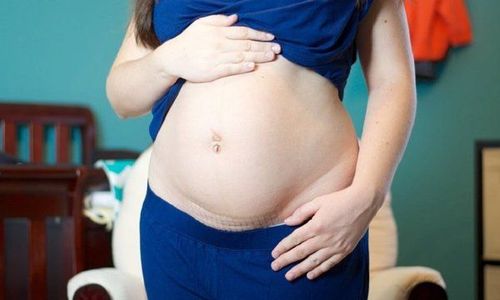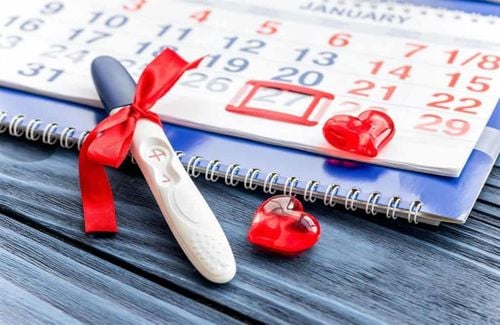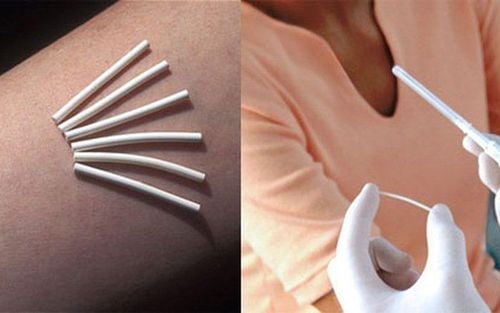This is an automatically translated article.
Fluid retention after cesarean section is a condition many women encounter. If not detected and intervened in time, uterine fluid retention after cesarean section can cause many consequences for the health of pregnant women.
1. What is fluid retention after cesarean section?
Fluid stasis after cesarean section, also known as fluid retention, is a phenomenon in which the fluid cannot escape from the outside but is stagnate in the uterus of a pregnant woman after giving birth. Normally, after giving birth, a woman will secrete fluid outside. The fluid includes amniotic fluid, blood, cervical secretions, and endometrial debris. Through the vagina, the discharge will flow out. The process of producing secretions will last from 2 to 6 weeks, depending on the location of each person.
If uterine fluid stasis after cesarean section is not detected and intervened in time, the mother may face conditions such as: Coagulation disorders, vaginal infection, bleeding that does not stop. ..even life-threatening.
2. Causes of fluid retention in the uterus after cesarean section
Some causes of fluid retention in the uterus after cesarean section include:
The mother's uterus shrinks slowly due to a lot of blood loss, the placenta is left behind, and the mother is exhausted; The mother's uterine muscle tone is poor due to the uterus being stretched too much (due to large fetus, polyhydramnios, multiple pregnancy, prolonged labor, mother sedentary after birth); The cervix is closed, making it impossible for fluid to escape. It is common in the case of a mother giving birth by cesarean section without entering the labor phase, so the cervix does not have the normal dilation phenomenon.
3. Signs of fluid retention after cesarean section
Normally, a few days after a cesarean section, the mother's body will continuously push out a large amount of bright red blood, like menstruation, accompanied by small blood clots. The more time after that, the more dilute the discharge and completely disappear after about 2-4 weeks. There are also cases where the discharge lasts longer, but only up to 45 days after giving birth.
If the mother has fluid retention after cesarean section, there will be signs such as:
The discharge has a bad smell and flows very little; The hypogastrium is tight and sometimes dull pain occurs; The abdominal cavity appears hard, very clearly felt when touching; The mother's body temperature increases; The cervix is closed, the woman feels pain when pressing the bottom of the uterus.
4. Is uterine fluid retention after cesarean section dangerous?
According to specialists, fluid retention after cesarean section is a dangerous condition. If not detected and treated promptly, intrauterine fluid retention after cesarean section can lead to bacteremia, bleeding disorders, and even severe infections requiring removal of the entire uterus. mother.
To avoid fluid retention after cesarean section, pregnant women need to carefully observe their body. When you see abnormal signs, you must go to the hospital for examination immediately to receive timely treatment and prevent bad complications.
5. Experience in treating postpartum uterine stasis
Uterine stasis after cesarean section cannot be cured at home, but the mother must go to the hospital to be examined by a specialist and have appropriate interventions.
Treatments for fluid retention after cesarean section can be:
Uterine aspiration: With this method, the doctor will use a suction tube to drain the stagnant fluid inside the mother's uterus. To avoid causing infection, this straw must be absolutely sterile. Cervical dilatation: When treating uterine fluid retention after cesarean section with cervical dilatation, the doctor will use specialized tools to help remove all the stagnant fluid in the mother's uterus. outside. To avoid complications, pregnant women need to go to a reputable hospital to perform this method. Use of drugs: There are also cases where women have fluid retention after cesarean section due to poor contraction of the uterus and closure, so the doctor will assign the mother to use drugs that cause uterine contractions to push the fluid out. In addition, some experiences in treating postpartum uterine stasis that doctors recommend to pregnant women are:
Eat enough nutrients; Women should exercise early, right after the catheter is removed, the woman can practice walking around the house to better expel the fluid. The mother should breastfeed the baby early to stimulate the uterus to contract and expel the fluid. Drink lots of water and massage your belly.
6. How to prevent fluid retention after cesarean section?
Fluid retention after cesarean section can pose many serious risks to the health of pregnant women if not handled early. Therefore, in order to prevent this situation, women who have a caesarean section should:
Clean the intimate area daily; Gentle exercise soon after birth; Urinate often so that the bladder can return to normal function; Mothers should eat a lot of foods that stimulate uterine contractions such as: green papaya, sweet potato soup, bitter melon... After 9 months and 10 days of heavy pregnancy, pregnant women enter childbirth and have to face with The severity of labor was compared with 20 broken ribs at the same time. In order for the birth to go smoothly and safely, pregnant women need to understand:
How the labor process takes place, how long does it usually take to have a normal delivery or caesarean section, to protect the best health for the unborn baby. Methods to relieve pain during childbirth, limit pain and relieve psychological pressure during labor. The way to push and breathe during childbirth is usually the right way so that the labor takes place quickly, the pregnant woman does not lose strength during childbirth. How to control postpartum uterine contractions in the shortest time. How to take care of the perineal suture does not cause infection and dangerous complications. Early postpartum re-examination to detect dangerous abnormalities such as residual placenta, missing gauze. Take care of newborn until full month healthy. To ease the pain of childbirth, Vinmec offers a full Maternity program with a complete "painless delivery" service during and after birth using non-morphine epidural and sedation techniques. ashamed. During the birth process, the mother will be guided by the midwives on how to push and breathe properly, the baby will be born in just 10-15 minutes. After birth, the baby will be cared for in a sterile room before being returned to the mother.
Pregnant women will rest in a high-class hospital room, designed according to international hotel standards, 1 mother 1 room with full facilities and modern equipment. Mothers will be consulted by nutritionists on how to feed the baby before being discharged from the hospital. Postpartum follow-up with both mother and baby with leading Obstetricians and Pediatricians.
Please dial HOTLINE for more information or register for an appointment HERE. Download MyVinmec app to make appointments faster and to manage your bookings easily.













